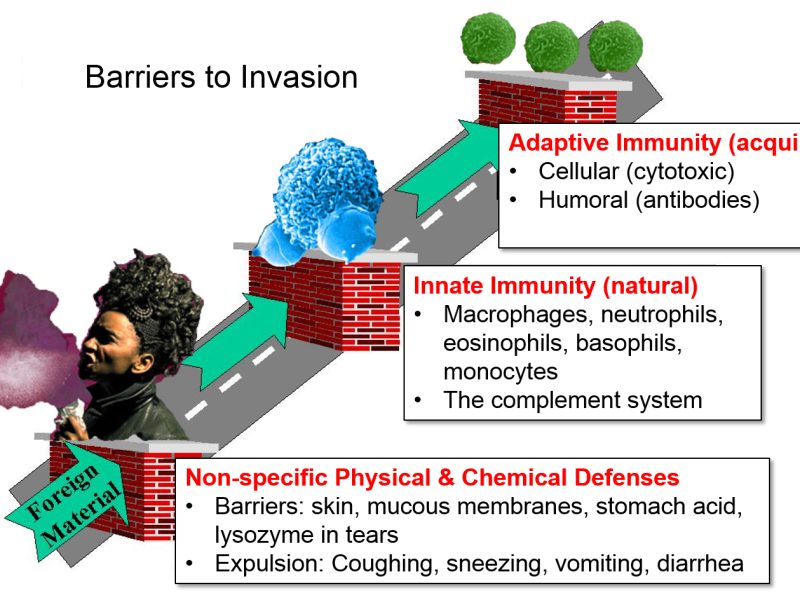Chronic Pain may last for months or years, depending on how severe it is. It can spread to the entire body and make some drastic change in your life, which may lead to depression and anxiety.
Before moving to its treatment, it is essential to know the real cause of Chronic Pain. The most effective approach to treating Chronic Pain is to use a combination of medications, therapies, and lifestyle changes.
What is Chronic Pain?
Chronic Pain is a pain that can last for so long time up to three months. It can come and go without absolute reasons, and it can happen anywhere inside the body.
A Chronic Pain can also interfere with your daily activities such as working, changes in social life, and taking care of yourself or others. This condition can lead to depression, anxiety, and insomnia, which can make your pain worsened.
It is completely different from Acute Pain, which mainly happens when you got hurt such as experiencing a simple cut to your skin or breaking bone. Acute Pain doesn’t last too long, once the body heals from pain, it would blow away. However, it can last for a long time even after healing, and it could also happen for no obvious reason.
Causes Of Chronic Pain
Chronic Pain can happen due to several reasons and before opting for any treatment, it is essential to know the root cause of chronic pain. So, here are some common causes.
Injury or Trauma:
Chronic pain can develop as a result of injuries, such as fractures, sprains, or soft tissue damage. Nerves can be damaged during the injury, leading to ongoing pain even after the initial healing.
Medical Conditions:
Various medical conditions can lead to chronic pain. These include:
- Arthritis: Conditions like osteoarthritis and rheumatoid arthritis can cause persistent joint pain.
- Fibromyalgia: A disorder characterized by widespread musculoskeletal pain, fatigue, and tenderness.
- Chronic Fatigue Syndrome: Involves prolonged and unexplained fatigue accompanied by pain.
- Multiple Sclerosis: An autoimmune disease affecting the central nervous system, leading to pain and other symptoms.
- Endometriosis: A condition in which tissue similar to the lining of the uterus grows outside the uterus, causing pelvic pain.
- Interstitial Cystitis: A chronic bladder condition causing pelvic pain and discomfort.
- Chronic Headaches/Migraines: Conditions causing recurring and severe head pain.
- Neuropathy: Nerve damage resulting in pain, tingling, and numbness. Diabetes is a common cause of neuropathy.
- Nerve Damage: Nerves can be damaged due to injuries, diseases (like diabetes), infections (like shingles), or surgeries, leading to chronic pain conditions like neuropathic pain.
Psychological Factors:
Emotional and psychological factors can contribute to the perception of pain. Conditions like depression, anxiety, and stress can amplify the sensation of pain.
Inflammation:
Inflammatory conditions, such as autoimmune disorders (e.g., lupus) or chronic inflammatory diseases (e.g., inflammatory bowel disease), can cause ongoing pain.
Post-Surgical Pain:
Some individuals experience this pain after surgical procedures, even after the expected healing time. This is known as post-surgical or postoperative pain.
Central Sensitization:
In some cases, the nervous system becomes overly sensitive to pain signals, causing heightened pain responses even to non-painful stimuli. Conditions like fibromyalgia and certain chronic headaches are associated with central sensitization.
To deal with this Pain, you need to go with a multidisciplinary approach, which involves medical professionals such as doctors, physiotherapists, and some therapies like acupuncture or medications.
Treatment of Chronic Pain
The treatment could be very complex in some instances, and you will be required to go with a personalized and tailored approach to get an optimum solution.
-
Medical Interventions:
Opting for medical interventions is one of the crucial things that a patient should do to get some relief from pain. Medicines like ibuprofen and some antidepressants can help in that pain. Moreover, some pain relieving injections and creams can also help you in recovering quickly from all such pains.
-
Physical Therapies and Rehabilitation:
Physical Therapies can also be very helpful in treating chronic pain. Implementing customized exercise can be very helpful in enhancing scalability, and flexibility, and to improvise the functioning of painful muscles.
Many trained therapists are available at different locations who will help by employing different exercises and manual techniques to manipulate the spine for effective treatment.
-
Psychological Approaches:
Therapeutic guidance helps reframe negative thoughts and behaviors, diminishing pain perception. Opting for cognitive behavioral therapy has numerous advantages that may never think of.
Using some mindfulness techniques such as Meditation, deep breathing, and relaxation practices will help alleviate pain and stress effectively.
-
Interventional Procedure:
Opting for interventional procedures such as injecting anesthesia or anti-inflammatory agents near your nerves can temporarily block pain. In fact, controlled heat disables pain-causing nerves, interrupting pain signals.
The Spinal Cord Stimulation by implanting devices emits electrical impulses to modify spinal pain signal transmission.
-
Alternative and Complementary Therapies:
Acupuncture is a great option to treat this pain, this treatment is also popular with needle therapy. In this treatment, the needle will stimulate energy points, and provide optimum relief from pain.
The massage therapy is another alternative to treat chronic pain. There will be some manipulation of soft tissues, which will reduce muscle tension and promote relaxation.
Symptoms of Chronic Pain
Here are some of the common symptoms-
1. Persistent Pain:
Chronic pain is characterized by its enduring nature. Unlike acute pain, which serves as a warning signal for injury or illness, persists beyond the expected healing time. It can persist for weeks, months, or even years, often causing frustration and impacting daily life.
2. Pain Intensity:
The intensity of chronic pain can vary widely. Some individuals experience mild discomfort that’s manageable, while others endure severe and debilitating pain. The pain’s intensity might fluctuate over time, with periods of relative relief followed by spikes in pain.
3. Sensory Changes:
Chronic pain can lead to altered sensory perceptions. For instance, individuals might experience tingling, numbness, or hypersensitivity in the affected area. This is often due to nerve involvement or damage.
4. Fatigue:
The constant presence of pain takes a toll on the body, leading to fatigue and decreased energy levels. This fatigue can be both physical and mental, affecting overall well-being and quality of life.
5. Sleep Disturbances:
Pain can disrupt sleep patterns in several ways. Falling asleep might be challenging due to discomfort, and pain could wake individuals up during the night. The resulting sleep disturbances can lead to daytime drowsiness and further exacerbate the impact of chronic pain on daily functioning.
Final Words
In conclusion, chronic pain is a multifaceted and challenging condition that extends beyond the boundaries of physical discomfort. It encompasses a range of symptoms that can significantly impact an individual’s overall well-being and quality of life. From the persistent nature of the pain to the sensory changes, fatigue, and sleep disturbances it brings, leaves no aspect of life untouched.
The emotional toll is equally profound. Mood changes, decreased social interactions, and the potential for isolation further compound the challenges individuals face. The cognitive impact, impaired concentration, and reduced ability to engage in daily activities add layers of complexity to the experience




















